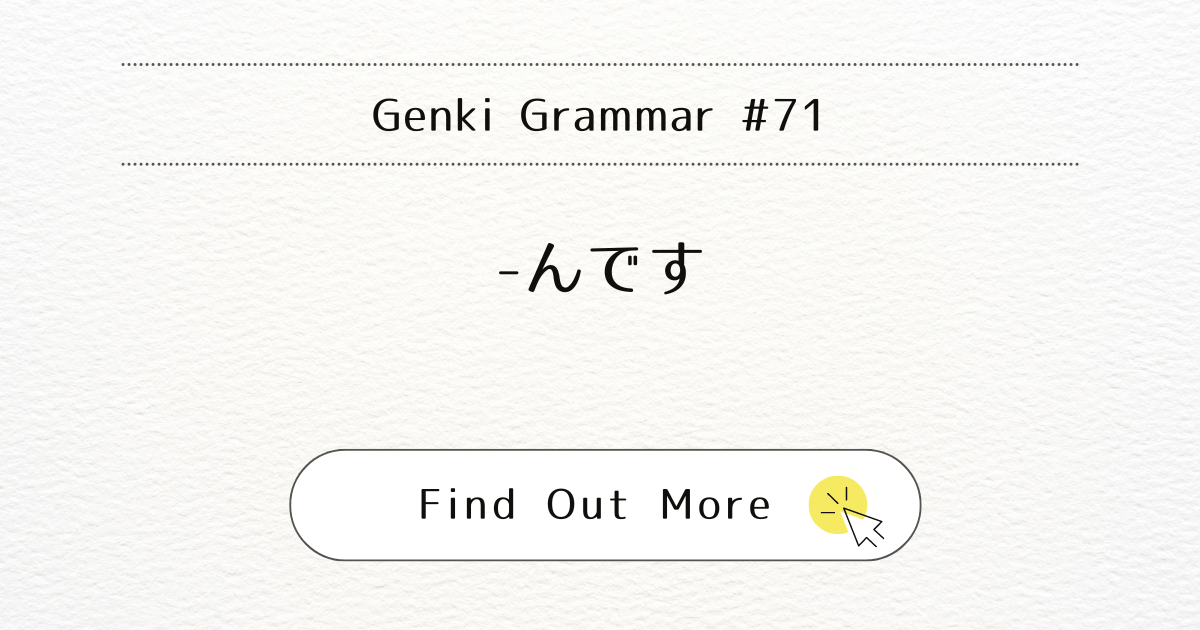
Introduction
In this blog post, we will learn about the Japanese grammar pattern: -んです (ndesu). This pattern is used to explain things and provide reasons. Let’s explore how to use it!
What It Means
The -んです (ndesu) pattern is used to explain or give reasons for something. It connects the fact with the situation being discussed.
When You Use It
Use -んです (ndesu) when you want to:
- Explain why something happened.
- Provide a reason for your action or situation.
- Invite clarifications in questions.
Examples
Here are some examples to help you understand how to use -んです (ndesu):
Example 1: バスが来なかったんです。
(Basu ga konakatta ndesu.)
The bus didn’t come. (That’s why I’m late.)
Example 2: あした試験があるんです。
(Ashita shiken ga aru ndesu.)
I have an exam tomorrow. (So I can’t go out tonight.)
Example 3: トイレに行きたいんです。
(Toire ni ikitai ndesu.)
I want to go to the bathroom. (So tell me where it is.)
Example 4:

どうして彼と別れたんですか。
(Dōshite kare to wakareta ndesu ka.)
Why did you break up with your boyfriend? (You’ve got to tell me.)

彼、ぜんぜん部屋を掃除しないんです。
(Kare, zenzen heya o sōji shinai ndesu.)
Oh, him. He never cleans his room. (That’s why.)
Note
- When -んです (ndesu) follows a noun or a な-adjective in the present tense affirmative, な (na) comes in between.
- 静かなんです (Shizuka na ndesu): It’s quiet. (That’s why.)
- 学生なんです (Gakusei nan desu): I’m a student. (That’s why.)
- Use -んです (ndesu) to provide additional comments on what has just been said.
- A: きれいな絵ですね。
(Kirei na e desu ne.)
That’s a beautiful picture. - B: ええ。日本で買ったんです。
(Ee. Nihon de katta ndesu.)
You bet. I bought it in Japan. (For your information.)
- A: きれいな絵ですね。
- In written language, のです (no desu) is used instead of んです (ndesu) for a more formal style.
- In casual conversation, んです (ndesu) appears as んだ (nda) and in casual questions, んですか (ndesu ka) is replaced by の (no).
行かないんです→行かないんだ
(Ikanai ndesu → Ikanai nda)
行かないんですか→行かないの
(Ikanai ndesu ka → Ikanai no)
Conclusion
The -んです (ndesu) pattern is a great way to explain reasons and provide context in Japanese. It makes your conversations more informative and engaging.



